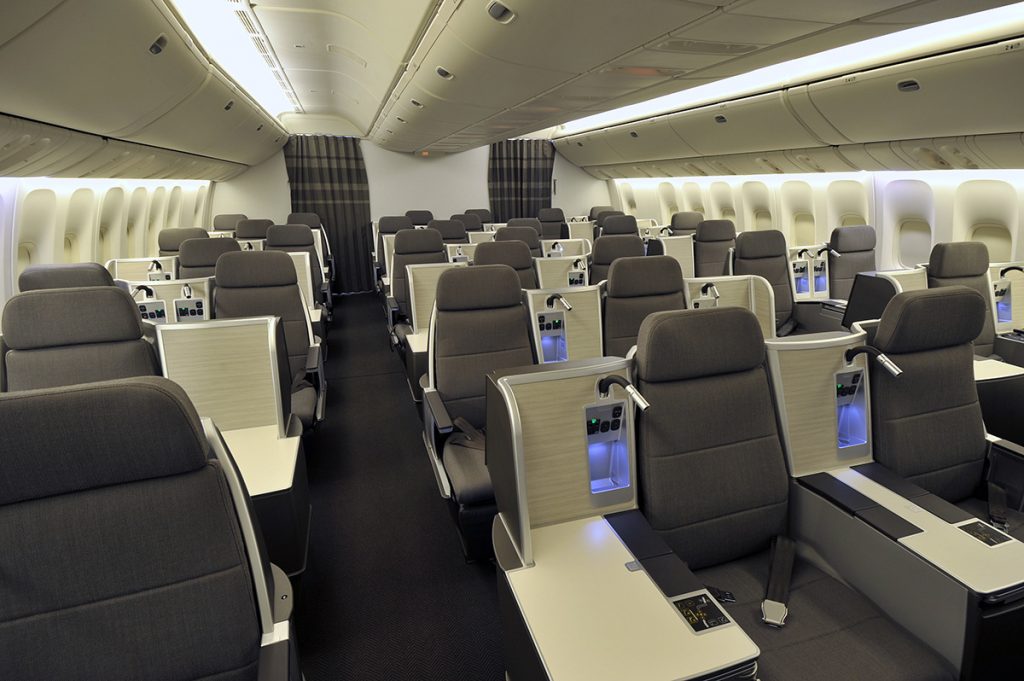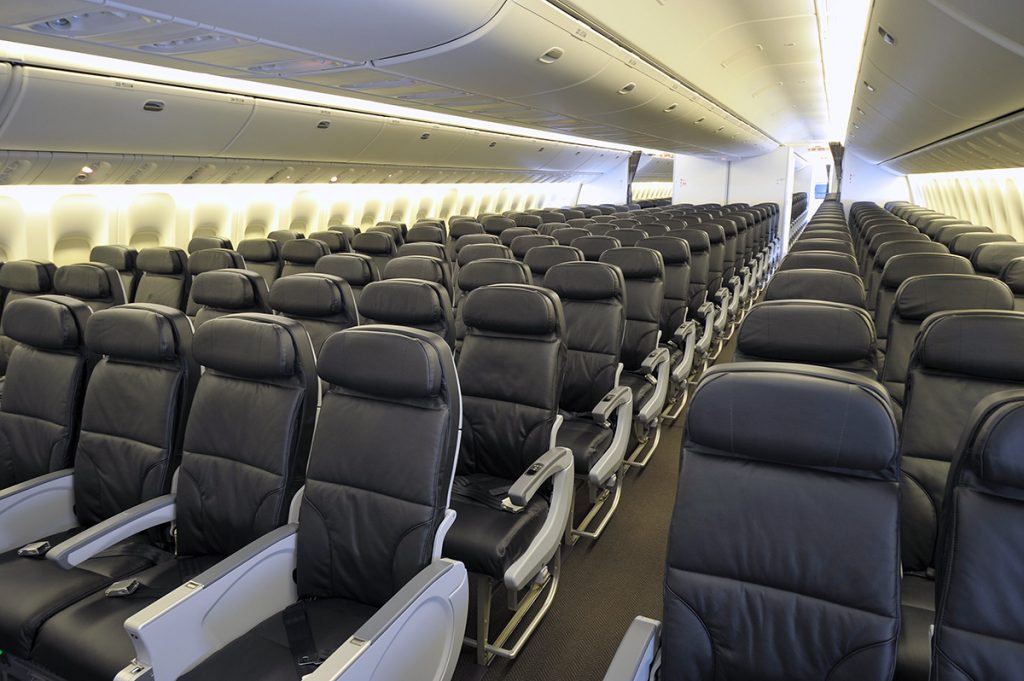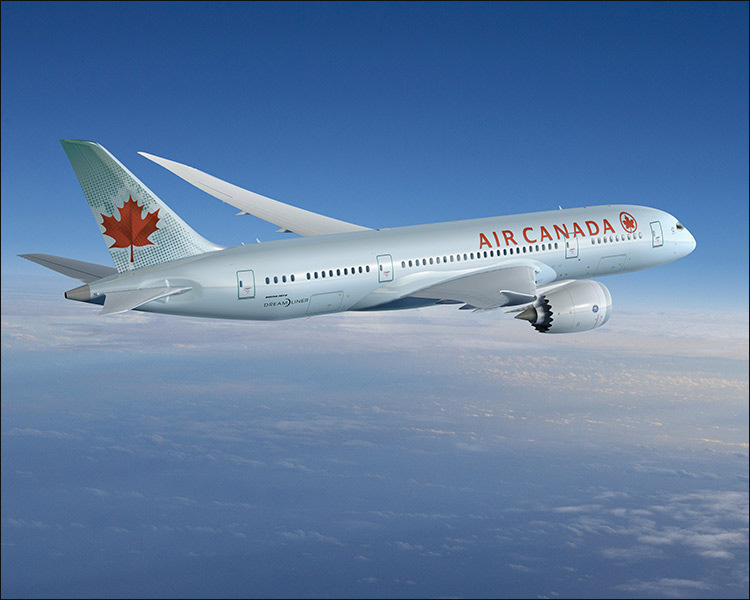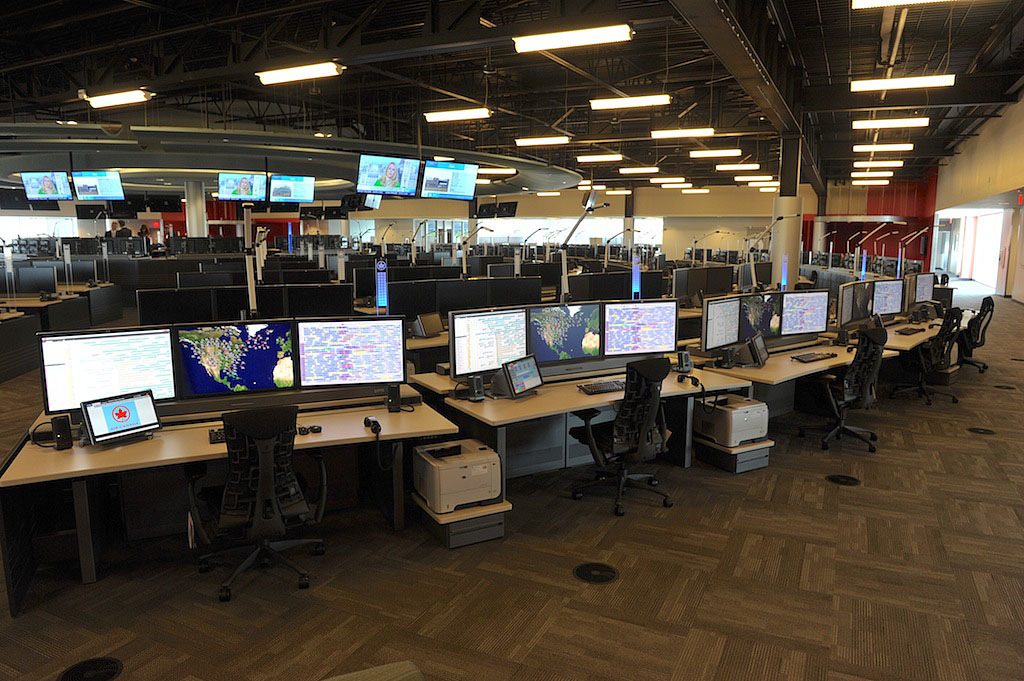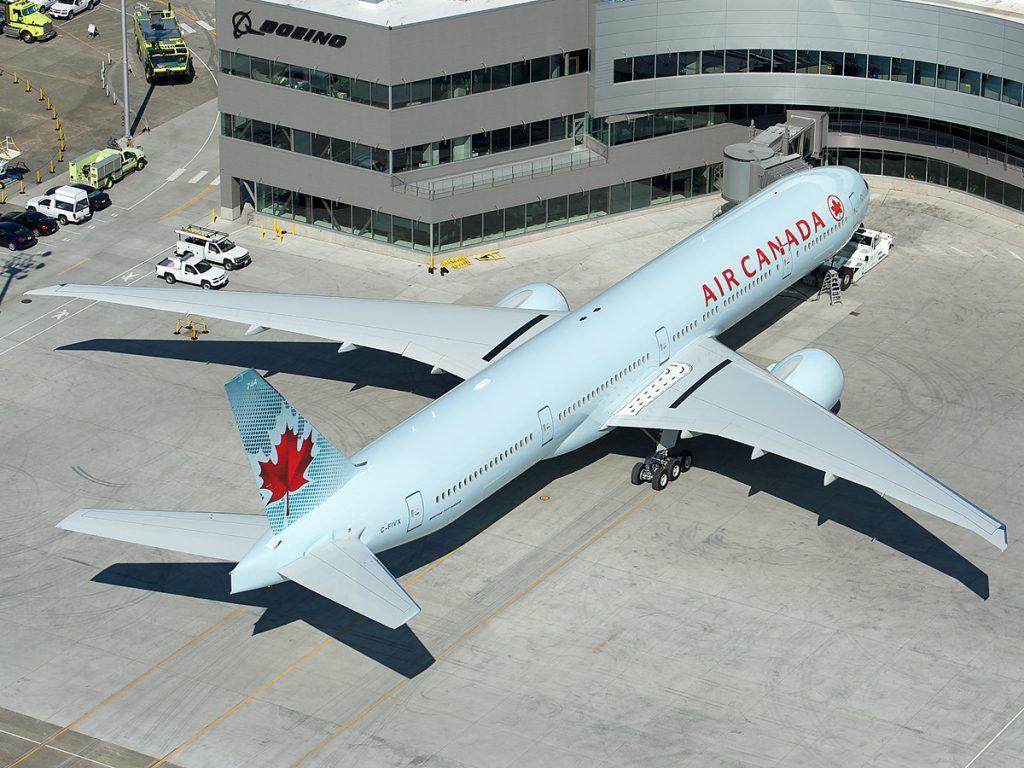
Sparkling-new Air Canada 777-300ER C-FIVX at the Boeing Delivery Center, Paine Field, Everett WA. Photo: Bernie Leighton
Written for AirlineReporter.com
It’s looking pretty busy at Air Canada (AC) and not just because they’ve launched their new “leisure airline,” rouge.
This summer, AC took delivery of the first two 777-300ERs from their latest five-plane order. When this order is completed, AC will have 17 -300ERs and 6 -200LRs in their international fleet. While AC’s new 777s look standard on the outside, they are very different inside.
Their newest 777s are configured in a new, three-class cabin, seating 458. That’s a huge 30% capacity increase from AC’s older 777-300ERs, which have 349 seats in a two-class arrangement. What all has changed? Obviously we had to take a closer look.
Starting at the front of the plane, “Executive First” has changed from a configuration of 42 “suite” herringbone seats to 36 seats, staggered in a 2-2-2, 1-2-1 set up. The seats are still fully lie-flat, but are now parallel to the aisles.
Next, Air Canada has added a new, 24-seat “Premium Economy” section. It’s in a 2-4-2 configuration, with a 38″ pitch similar to AC’s “Executive Class” seats on their A320 fleet, but with a slightly narrower seat.
The biggest changes are in economy. Seating capacity has jumped from 307 in AC’s existing -300ERs to 398 in the new planes. The configuration has gone from 3-3-3 to 3-4-3 in almost every row – 10 across! The seat width is down from 18.5″ to 17″, and the pitch has dropped by an inch to 31″. AC is using new “slimline” leather seats with a slightly increased seat recline of six inches.
The new 777 was introduced on AC’s Montreal (YUL) to Paris (CDG) flights. In a recent earnings call, Air Canada CEO Calin Rovinescu was pretty happy about the new planes. “The other day, we operated to Paris on 100-per-cent load,” Mr. Rovinescu said. “So passengers seem to like the product.” It’s great for AC that they filled the plane, but I think the full load was more likely due to their competitive fare structure and summer demand, versus fliers seeking that exact configuration.
Also to be noticed; the colour scheme is completely different from AC’s existing interiors, which are based on a blue palette. Is this AC’s new “look”? Well, here’s a description from Air Canada’s press release announcing the new planes: “Air Canada’s five new Boeing 777-300ER aircraft will provide customers with a refreshed interior colour palette in modern, neutral tones unique to these aircraft pending the official launch of Air Canada’s future in-flight product and cabin design that will be made in conjunction with the introduction of Boeing 787 aircraft into its fleet.”
Air Canada has 37 Dreamliners on order, with 15 787-8s and 22 787-9s coming into the fleet. The same press release might give another clue. The 787s “will feature a brand new, enhanced version of Air Canada’s award-winning Executive First lie-flat beds and product that has yet to be announced, in addition to Premium Economy and Economy options.”
So it looks like Air Canada’s future international fleet of 777s and 787s will have a similar configuration. Many of Air Canada’s 767s will be transferred to rouge as the 787s come into the fleet starting early in 2014.
I also expect that AC’s eight A330-300s will be gone pretty quickly, too. Air Canada’s fleet upgrade is integral to their strategy, as described by Mr. Rovinescu, of “focusing significantly on international expansion.”
While Air Canada looks to expand its network, last week the Canadian Transportation Agency (CTA) ruled that the airline must revise its compensation to passengers who have been denied boarding due to overbooking. The CTA notes that overbooking is commonplace among airlines, and believes “the practice serves the interests of both the carriers and the traveling public because carriers are able to operate at maximum capacity, which should result in reduced fares.” Right.
However, the CTA ordered Air Canada to revise its payments to bumped passengers. Previously, AC only had to pay either $100 cash or a $200 travel voucher if you were bumped from a North American flight. Under the new rules, AC must compensate passengers based on the delay incurred in getting them to their destination: $200 for up to a 2 hour delay, $400 for 2 to 6 hours, and $800 if the delay is 6 hours or more.
This new rule doesn’t apply if the passenger takes a voluntary bump and accepts whatever deal AC offers. The rule also acknowledges that Air Canada has the right to substitute a smaller aircraft for “for operational and safety reasons.” If the substitution is required due to events “beyond its control,” then AC is relieved of having to pay compensation.
Maybe this will help Air Canada ensure they have the right plane in the right place at the right time. In late-August, AC announced the opening of their new Global Operations Centre. This 75,000 square foot facility is just northwest of Toronto-Pearson International Airport (YYZ) in Brampton, Ontario.
The new state-of-the-art control center will be fully operational in early 2014, after testing, training, and transition is complete. 400 employees will work in the Operations Centre around-the-clock, handling over 600 Air Canada flights each day and almost 35 million passengers a year.
